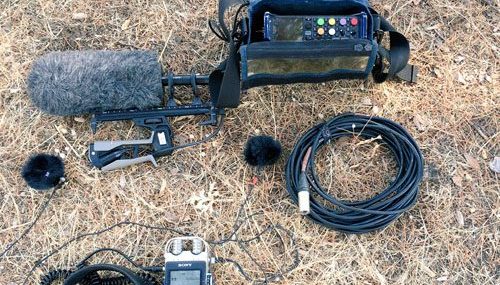
This week I released our latest SFX Library, Cicadas. I was born in Spain, and since I was a kid, I always heard cicadas around me during summer time. My hometown is Cordoba, the warmest city in Spain. This is the climate data for Córdoba (1981-2010).

But a few years ago I moved to the UK and, when summer arrived, I noticed something: I couldn’t hear a single cicada. It felt like something was taking from me. I promised myself I was going to record them, but never had enough time to do so. This summer I was going to spend more time in Spain so I knew this was my chance to record cicadas.
It took me a few months to record as many as I wanted in order to feel satisfied with the number of files and variety. While collecting the sounds, I found out a few tips and tricks that I want to share with other field recordists.
- In early summer there are much less cicadas. The temperature is high enough to get out and make noise but not that high to form swarms and chorus. Therefore, it’s quite easy to end up in a location with just two or three cicadas chirping. If that happens, be aware that when approaching to the cicada it will stop chirping as soon as it discovers you. They are very shy. That could be two meters away, five or even ten! Wearing flashy clothes is not helpful either, so try to wear green and brown. You will be able to get much closer to them. Even though this was already a success, I wasn’t quite happy with the results, so I ended up using my boompole. That, and a bit of my Solid Snake skills, allowed me to record the close ups included in the library. Unfortunately I couldn’t record them with a microphone that goes up to 100kHz (Hi there Sanken Co100k!). Hopefully I’ll do it next year.
Original File, recorded with a Sennheiser 416.
File pitched down 24 semitones.
- If happens that you have been found out, don’t get panic, there’s no need to leave the location yet. Another cicada will start chirping from the next tree. Or maybe it’s the same one that moved. To be honest, I have no idea. The point is that you will have a second chance.
- Once the temperatures reach 35ºC or so, the cicadas will form a big chorus and chirp all together and at the same time. By this point they are not shy anymore. Doesn’t matter what you are wearing or how much noise you make, they won’t stop. As a team they feel safer.
- If you want to get less cicadas, go out in early summer (June or even May). It will you give more time and less stress to get what you came for. Another option is to go early in the morning in July or August, but have in mind that you will run into runners, families and cyclists who will ruin your recordings. Unless you want to record urban atmospheres with cicadas in the background.
- Swarms and chorus will probably have to wait until July. In other words, when it’s quite hot.
- First cicadas tend to start chirping by 10am. It will get noisier as the day goes by. They’ll stop by 22-23pm, when they have been replaced by crickets.
- Frequency is affected by the size of the insects and, more correctly, the size of the organs associated with sound production and amplification (timbals, abdomen etc.). Smaller cicadas with small timbals tend to have higher frequency songs. Most cicadas in the genus Cicadetta Group VII call with major frequency components at above 17kHz. Most medium sized cicadas produce sound in the 4-16kHz range. Large cicadas normally have most dominant frequency components between 3-12kHz (Source). Let’s have a listen at the previous file, split into frequency range.
- 0 – 500Hz
500 Hz – 2000 Hz
2000 Hz – Onwards
- In this case, you can see there’s barely nothing below 2000 Hz.
This is pretty much all. As I said above, next year I’ll try to get more recordings. Feel free to comment below or drop me an email. I’d love to hear your thoughts (and recordings!).
Happy sound hunting!
Note: all these recordings have been done in Spain, so I cannot guarantee all these tips will work in different environments. I would suggest though that these conclusions could be extrapolate to the Mediterranean area, since weather, flora and fauna are quite similar.
